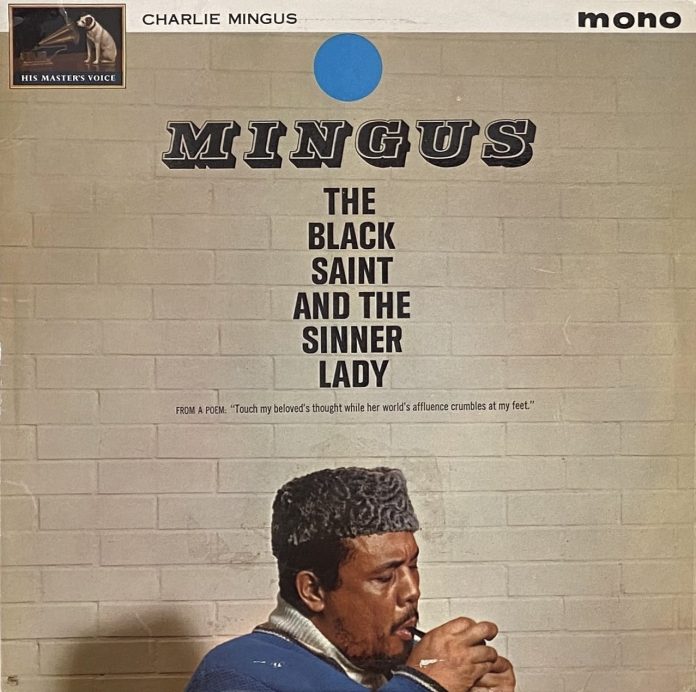You must expect your first reaction to any Mingus record to be shock, and this opus is certainly no exception. With this larger band, his work seems to have increased in complexity in proportion to the size of the band, and I would like to have this record around for a month or so, before giving a final verdict. I must write off the sociological or fictional significance of the titles for, apart from the titles themselves, there is no attempt at explaining the rather forbidding events depicted here.
The ugliness, brutality, hokum and sensitivity are all here in their usual quantities, interspersed with some very good jazz solos. Strange variations in tempo are at first disconcerting, but I’ve learnt to live with them. As usual, Mingus, speaking through his group, hounds his material like a pack of wolves. The instant intensity for which he is so noted is also a major factor in his great originality.
Before commenting on the music, let us give credit to the soloists. Mingus loves a trombone, and it is surprising to find Quentin Jackson absolutely in his element in this far-out crew. His jungle sounds add immense quantities of colour to the group and at one point in the second track his fierce duet with, I suspect, Rolf Ericson (also muted) erupts into one of those Mingusian consummations which have a quality almost to be described as consecrated.
Jerome Richardson assumes a new importance in the way he leaves behind his normal musical artisanship and becomes an important soloist on both baritone and soprano saxes. Mariano has a prominent part to play, for this music is largely Ellingtonian, and his role is that of Hodges. The sound quality which he uses is a ringer for Rabbit. Jay Berliner plays brooding acoustic guitar in sharp contrast to the general turbulence, and Dannie Richmond spins the band in his usual role of Charlie’s alter ego. The trumpets play well in solo and exceptionally in the group sounds. Jaki Byard tends to tinkle a bit and is the only musician I would fault. Mingus plays with his usual richness – listen to his bowed section during an orchestral passage on the third track of the first side – and also bends a hole in the piano.
The music itself, as I have mentioned, is largely Ellingtonian in conception, with ragged and full-blown brass and reed scoring which vividly recalls some of Oliver Nelson’s work.
If you like Mingus you must no more think of going without this record than you would give up vitamin C, for there is no doubt that it is a classic amongst his works. If you collect Quentin Jackson records, then this will please you, and might also make you a Mingusian.
If you haven’t enjoyed Mingus in the past, then you probably won’t like this. But it’ll be in this year’s top ten.
Discography
Stop! Look! And Listen, Sinner Jim Whitney!; Hearts’ Beat And Shades In Physical Embraces; Freewoman And Oh, This Freedom’s Slave Cries (20 min) – Stop! Look! And Sing Songs Of Revolutions!; Saint And Sinner Join In Merriment On Battle Front; Of Love, Pain And Passioned Revolt, Then Farewell, My Beloved, ’Till It’s Freedom Day (19 min)
Rolf Ericson, Richard Williams (tpts); Quentin Jackson (tbn); Don Butterfield (tu/contra-bass/tbn); Jerome Richardson (bari/sop/clt); Dick Hafer (ten/flt); Charlie Mariano (alt); Jaki Byard (p); Jay Berliner (g); Charlie Mingus (bs, p); Dannie Richmond (d). N.Y.C., 20/1/63.
(HMV CLP 1694 12inLP 32s.)
















